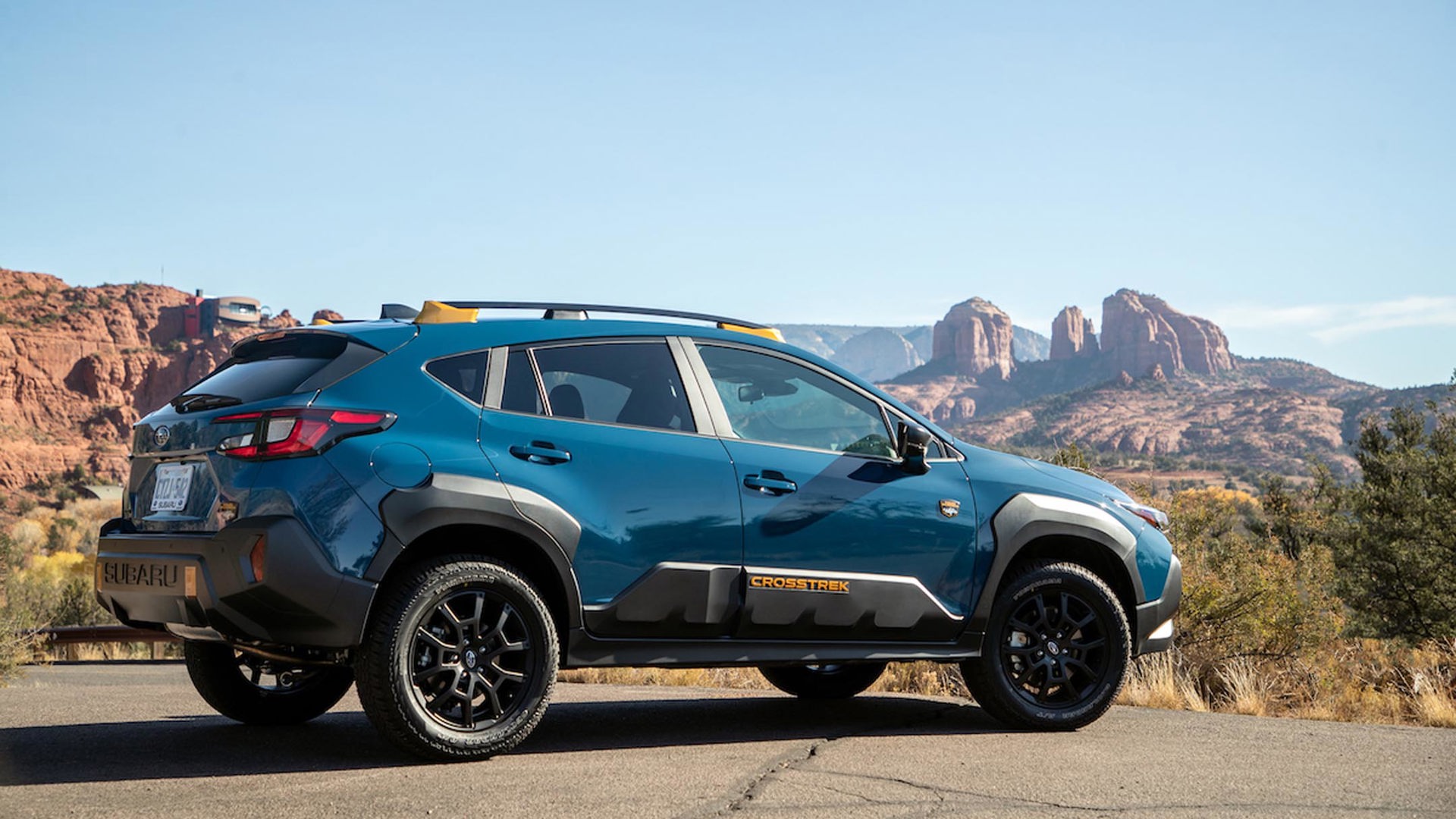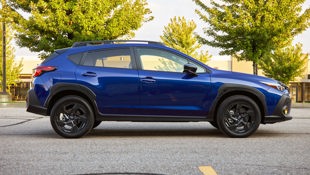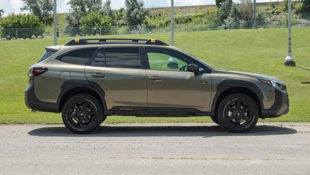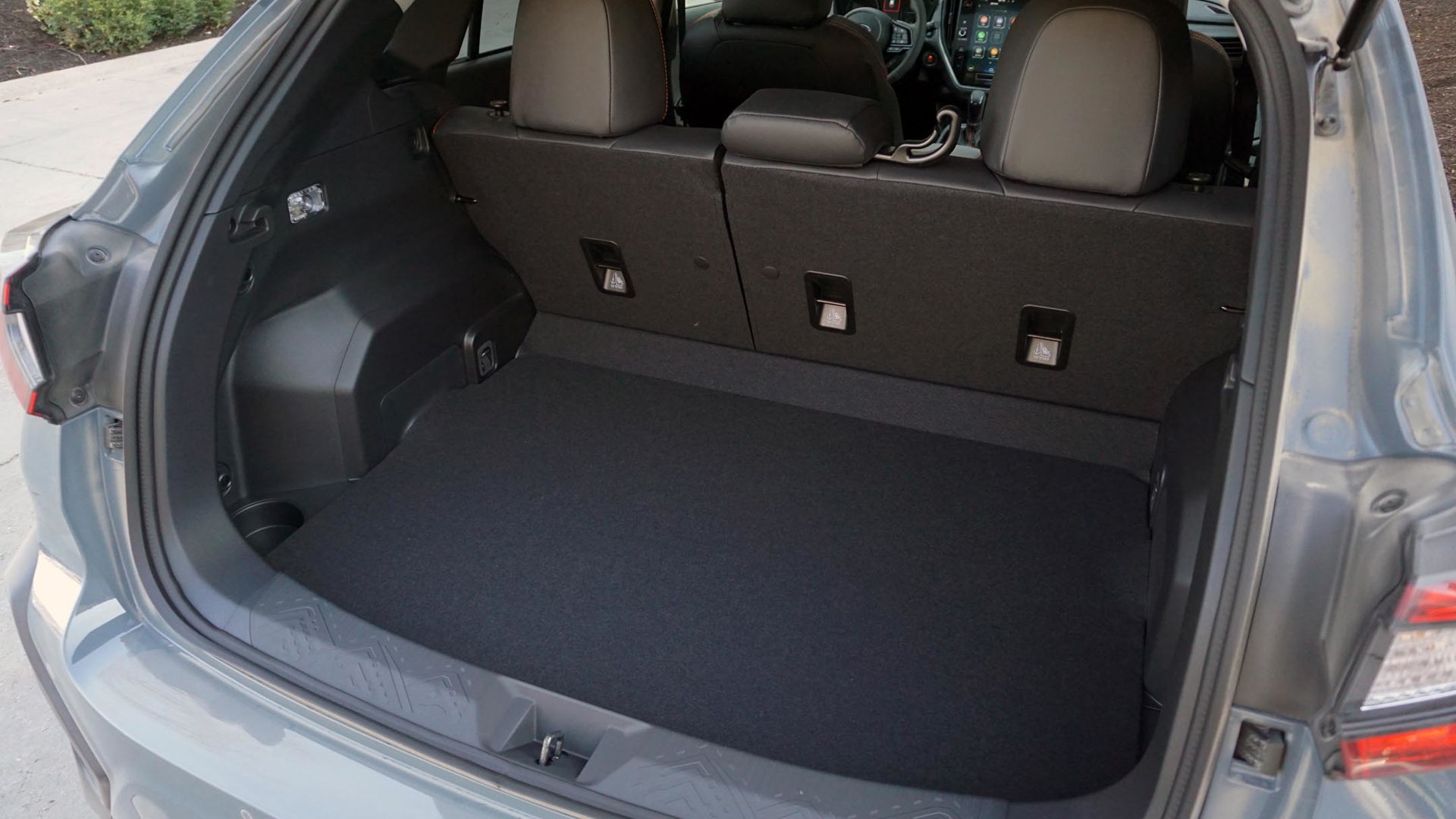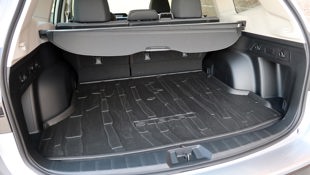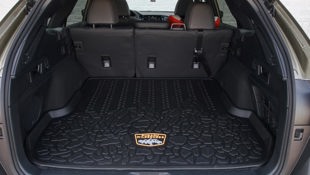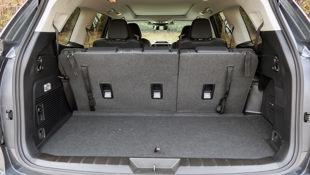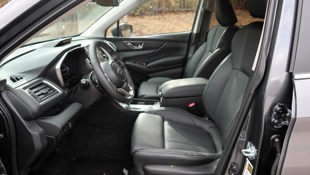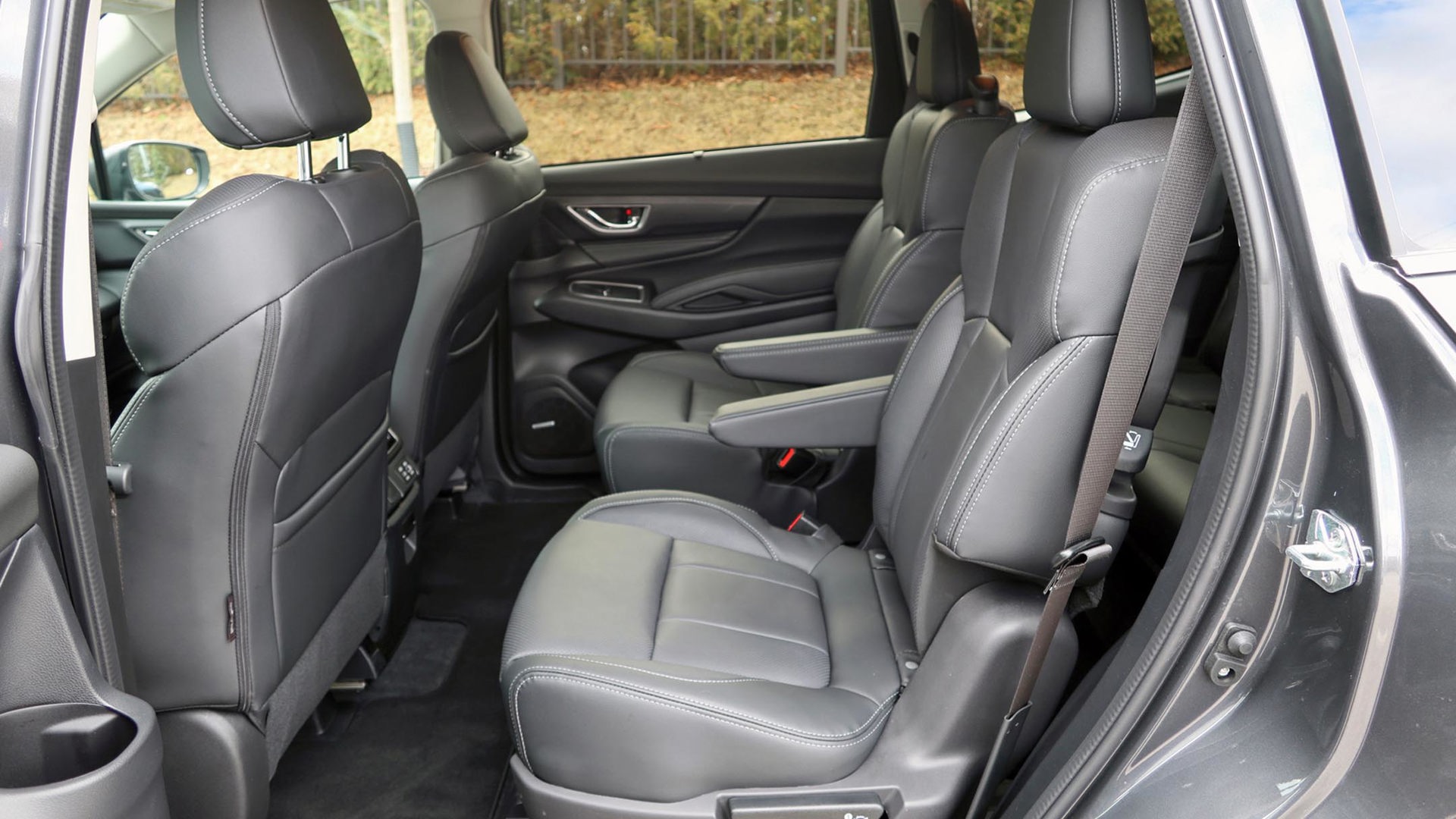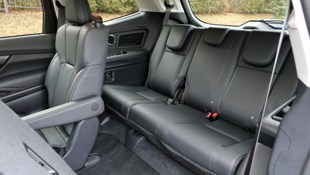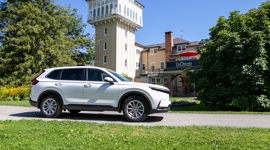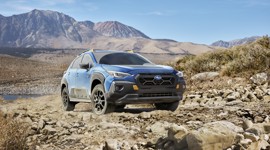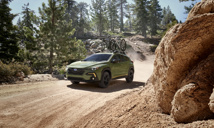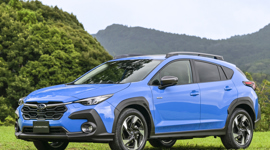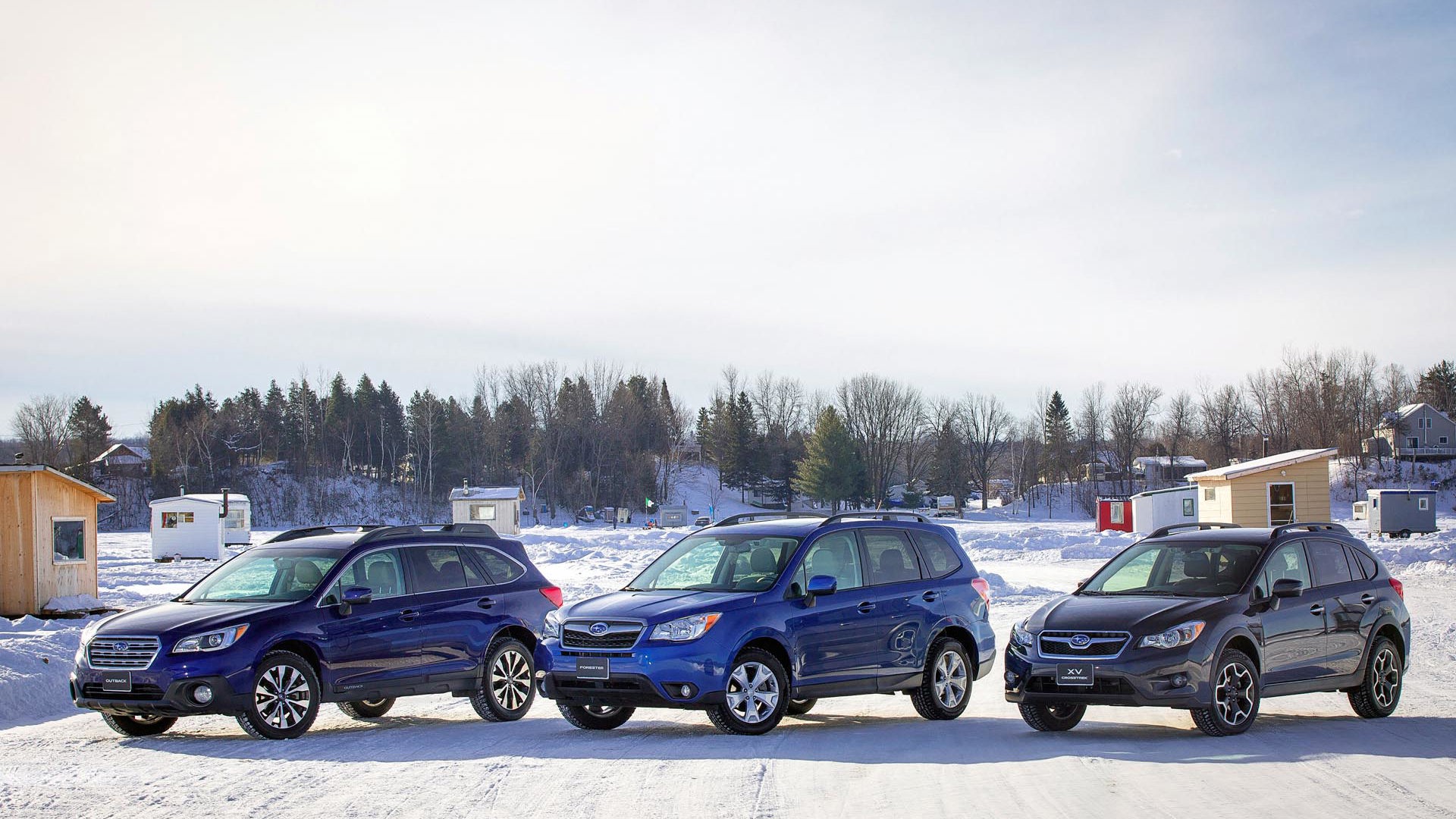Sales of Subaru SUVs are gaining traction (pun intended) as more and more shoppers opt for the adventure-ready, all-wheel drive (AWD) vehicles that comprise the bulk of its lineup. Canadians love their SUVs, and Subaru is one of several brands whose long-held reputation for making great SUVs positions it to capitalize on the trend.
Subaru’s SUV models come in four flavours: Crosstrek, Forester, Outback, and Ascent. We’re excluding the all-electric Solterra from this comparison.
If you’re considering a 2024 Subaru SUV but aren’t quite sure which one to buy, we’re here to help. I’ve crunched the numbers and analyzed the spec sheets to understand better how these SUVs compare on size, space, cargo, pricing, and even your monthly gas bill.
Introductions and Pricing
2024 Subaru Crosstrek
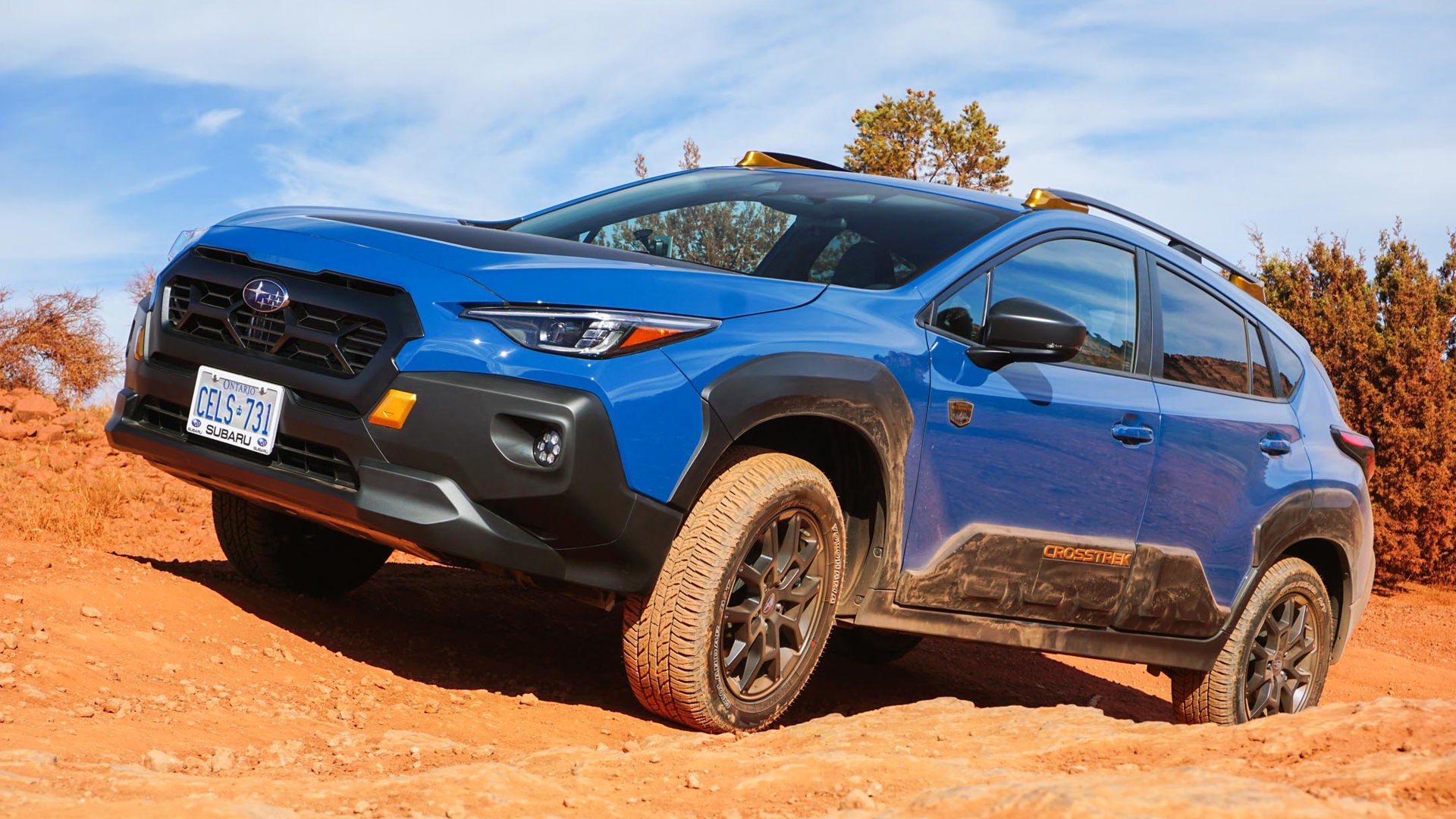
The 2024 Crosstrek is opening the bidding for your Subaru SUV dollars as the most affordable SUV in the lineup. It comes with two four-cylinder engine options, room for five, and, like all Subaru SUV models, AWD is standard. The Crosstrek will come from Indiana or Japan, depending on the trim. The Crosstrek enters 2024 overhauled for its third generation. Engine choices are a 2.0-litre boxer four-cylinder with 152 horsepower and a 2.5-litre boxer four-cylinder engine with 182 horsepower.
The Crosstrek comes in five trims, including the off-road-oriented Wilderness model. Canadian pricing for 2024 is listed below:
| Trim | Price |
|---|---|
| Convenience | $31,674 |
| Touring | $34,874 |
| Onyx | $36,674 |
| Limited | $39,674 |
| Wilderness | $40,674 |
2024 Subaru Forester

The Subaru Forester is built in Japan. The current Forester is the “oldest” model in Subaru’s lineup, having entered its fifth and latest generation on sale in 2019. A new model is expected to replace this one for model year 2025. The 2024 Forester is popular worldwide with owners who use theirs for commuting, outdoor activities, and everything in between.
The Forester comes exclusively with the 2.5-litre 182-hp boxer engine and is available in six trims:
| Trim | Price |
|---|---|
| 2.5i | $34,674 |
| Touring | $39,574 |
| Sport | $40,974 |
| Wilderness | $43,174 |
| Limited | $43,974 |
| Premier | $45,274 |
2024 Subaru Outback

Whether you call it an SUV or a wagon, the Outback has earned a place in the driveways of many active Canadians and is a hit with pet owners. The Outback’s low cargo load height and deep cargo hold provide vital flexibility, and a relatively low ride height makes it easier to deal with roof-mounted equipment and carriers. The ride and driving position feel more “big car” than “SUV,” with the lower seating position and good outward sightlines adding confidence. The Outback is in its sixth generation, which first hit the road in 2020 and was facelifted in 2023.
Engine choices include a 2.5-litre boxer with 182 horsepower or a turbocharged 2.4-litre boxer with 260 horsepower. The Outback comes in seven trims:
| Trim | Price |
|---|---|
| Convenience | $36,674 |
| Touring | $40,974 |
| Onyx | $43,274 |
| Limited | $44,974 |
| Wilderness | $47,474 |
| Limited XT | $47,974 |
| Wilderness XT | $50,474 |
2024 Subaru Ascent

The Subaru Ascent debuted in 2019 as the largest SUV ever from the brand, and it remained largely unchanged until a recent mid-cycle update for 2023 brought revised looks and features. In 2024, the Ascent will be five years into its first generation. With three rows of seating and Subaru’s most powerful SUV engine as standard, this range-topping model comes in seven trims:
| Trim | Price |
|---|---|
| Convenience 8-Passenger | $44,674 |
| Touring 8-Passenger | $49,174 |
| Touring 7-Passenger | $49,174 |
| Onyx 7-Passenger | $50,974 |
| Limited 8-Passenger | $54,574 |
| Limited 8-Passenger | $54,574 |
| Premier 7-Passenger | $57,674 |
How Do Subaru’s SUVs Compare in Size?
The Subaru Crosstrek is the smallest in all physical dimensions, measuring 4,480 mm (176.4 inches) long, 1,832 mm (72.1 inches) wide, 1,600 mm (63.0 inches) tall, and riding a wheelbase of 2,670 mm (105.1 inches).
The Forester has the same 2,670-mm (105.1-inch) wheelbase as the Crosstrek, but it’s 160 mm (6.3 inches) longer, 68 mm (2.7 inches) wider, and 130 mm (5.1 inches) taller than the Crosstrek.
Though the Outback and Forester are tied for width, the Outback has 235 mm (9.3 inches) of additional length. The Outback has negligible advantages in height and wheelbase, with each coming in ahead of the Forester, but only by a tiny margin.
The Ascent is closest to the Outback in length, maintaining a 123-mm (4.8-inch) advantage. Elsewhere, the Ascent is slightly taller and wider than the Outback. The Ascent also has a 145-mm (5.7-inch) longer wheelbase.
How do Subaru’s SUVs Compare on Cargo Space?
While it seems counterintuitive, having the largest physical dimensions does not mean having the most cargo space.
With the Crosstrek’s rear seats in use, it has 564 litres of cargo space. Fold the rear seats down, and cargo space expands to 1,549 litres.
The Subaru Forester provides 762 litres of cargo space with all seats in use. With its seats folded down, the Forester provides 1,957 litres of cargo space.
Subaru Outback drivers get 923 litres of cargo space with the rear seats in use. Folding the Outback’s rear seats away, cargo capacity climbs to 2,141 litres, only a small advantage over the Forester in this measure. If maximum cargo capacity is important to you, there’s virtually no difference between the Outback and Forester.
The Ascent is the only three-row model here. With all three rows of seating in their upright position and ready for use, the Ascent has 458 litres of cargo space. Folding the third row away opens up 1,193 litres of space behind the second row of seats, and folding all rows down opens up 2,061 litres.
Comparing seats-down cargo volume, the Forester is just 104 litres shy of the maximum cargo space rating for the Ascent, meaning it can deliver 95 per cent of the maximum cargo space of the Ascent at a considerable price advantage. The Subaru Outback may be an even better deal here since it boasts small advantage in maximum cargo space versus the Ascent. If you plan to use your Subaru SUV for a lot of seats-down cargo hauling, the Forester and Outback give you more bang for your buck than the Ascent.
How Do Subaru’s SUVs Compare on Passenger Space?
The Ascent’s front seat headroom is the most generous at 1,047 mm (41.2 inches), making it the front headroom champ among its siblings by a solid margin. Elsewhere, the Crosstrek, Forester, and Outback are virtually tied, with less than 12.7 mm (about half an inch) separating them on front headroom.
The Subaru Outback has the most rear-seat headroom. At 993 mm (39.1 inches), it bests even the Ascent’s 983 mm (38.7 inches) of second-row headroom, leaving the Crosstrek (965 mm/38 inches) and Forester (955 mm/37.6 inches) at the bottom of the list. Interestingly, the Forester’s tall and upright shape manages to turn in the lowest second-row headroom.
There’s redemption, though, as the Forester boasts the largest front-seat legroom measurement here, at 1,100 mm (43.3 inches). The Outback (1,087 mm/42.8 inches) and Crosstrek (1,090 mm/42.9 inches) are virtually tied for second place, while the Ascent has the lowest front-seat legroom at 1,072 mm (42.2 inches).
At 1,003 mm (39.5 inches), the Subaru Outback offers the most rear legroom, with the Forester virtually tied for first place with 1,001 mm (39.4 inches). The Ascent offers nearly an inch less second-row legroom than the Outback or Forester, with 980 mm (38.6 inches). Finally, the Crosstrek tails the pack with just 927.1 mm (36.5 inches) of rear legroom.
The Ascent is the only model here with a third row. It offers 920 mm (36.2 inches) of headroom and 805 mm (31.7 inches) of legroom and is best left for kids.
How Do Subaru’s SUVs Compare on Fuel Economy?

The Subaru Crosstrek has a 2.0L flat-four boxer engine with 152 horsepower or a 2.5L engine with 182 hp. These two engines use virtually the same amount of fuel despite the larger unit delivering 30 more horsepower, which is a great reason to upgrade to the larger engine.
Regardless of the engine you choose, the Crosstrek will consume an average of about 8.1 L/100 km. If gas costs $1.50 per litre, then driving 100 kilometres in the Crosstrek will cost about $12.15. If you drive 25,000 kilometres per year, that’s an annual fuel bill of $3,037.
The Subaru Forester comes solely powered by the non-turbocharged 2.5L engine and its 182 horsepower. It’s slightly larger than the Crosstrek, and consumes slightly more fuel as a result, but the difference is negligible.
The Forester is rated at 8.2 L/100 km, so with gas at $1.50 per litre, driving 100 kilometres will cost you $12.30. If you drive 25,000 kilometres per year, you’re looking at an annual fuel bill of $3,075. Compared to the Crosstrek, the Forester costs just $38 per year more on gas while delivering the best rear-seat legroom.
The base Subaru Outback runs the same engine but consumes a touch more fuel than the Forester for an annual fuel bill of $3,113.
The 2.4L boxer turbo engine in the Outback’s higher trims is rated for 9.5 L/100 km. That’s 1.2 litres more fuel for every 100 kilometres you drive versus the base engine. Annually, the Outback with the upgraded turbo engine will consume $3,562 worth of gas, compared to just $3,113 with the standard engine.
Shoppers considering their fuel budget should allow for an additional $450 per year in fuel if they’re opting for the turbo engine in their Outback. That’s a little under $40 per month on fuel versus the standard engine, or about 13 per cent more of your fuel dollars in exchange for about 35 per cent more horsepower.
The Ascent comes standard with the Outback’s optional 2.4L boxer turbo engine, but consumes an average of 11 L/100 km, costing $16.50 for every 100 kilometres driven. Annually, the fuel bill will be about $4,125, about $563 per year more than the Outback with the same engine and a difference of just under $50 per month.
Final Thoughts

The Subaru SUV you choose will depend on your priorities and what you need from a vehicle, but they all have a reputation for being safe and reliable vehicles that are unstoppable in the winter and well-equipped for outdoor adventures or hobbies. All Subaru SUVs are straightforward to use and come standard with a long list of safety features, and both the Crosstrek and Outback were voted as best in their segments by AutoTrader’s panel of experts in the 2024 AutoTrader Awards.
